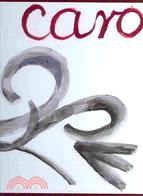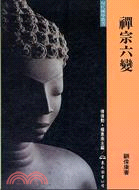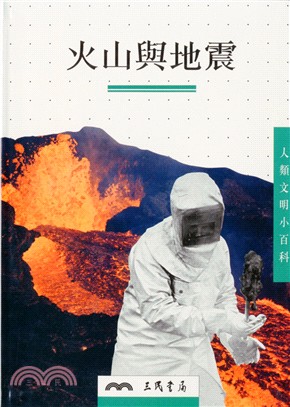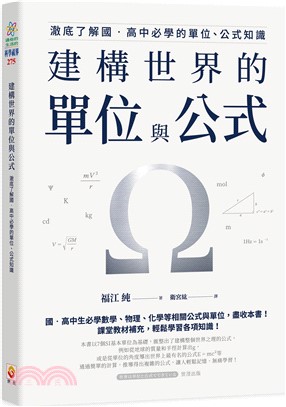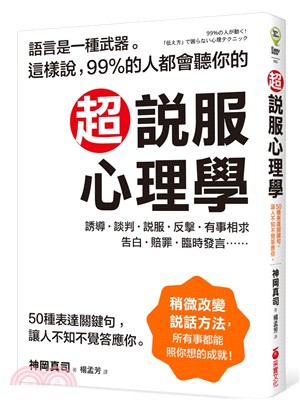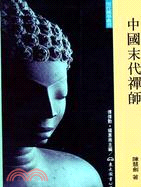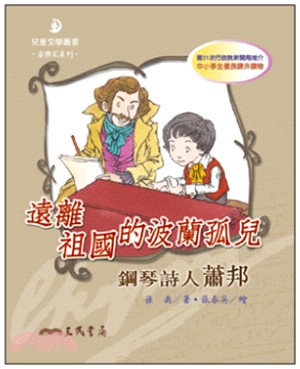相關商品
商品簡介
作者簡介
商品簡介
Though Anthony Caro's oeuvre is most readily identified by large-scale and plinthless sculptures that sometimes dwarf the viewer, he has directed a significant portion of his energies over the past five decades to the production of domestically sized pieces in a variety of media. This volume explores this underappreciated course of Caro's prolific output.
The book is divided into sections that fall along the divisions of medium: Table sculptures (including `Writing Pieces'), Bronze Pieces, lead and Wood Sculptures, Paper Sculptures, Silver Pieces, Ceramic Sculptures and Jewellery. It provides an insight into Caro's working practice by considering the scale, the setting and the materials of Caro's small-scale sculpture.
This volume offers an illuminating perspective on Caro's adventurous sense of the appropriate form and function of sculpture as he experimented simultaneously with their size, scale and medium
This book surveys Caro's free-standing, floor-based, constructed, abstract sculptures from 1960 to the present. The unifying theme of these works is that they answer Caro's imperative `to make something that was as important in a room as a person'. The author explores the idea of presence in Caro's sculpture, focusing on the way that in order to invest sculpture with an independent existence and self-contained reality, it was necessary for Caro to purge it of figurative references. As a result, Caro has created sculptures that are `in the world' but not `of the world': they have their own individual character, but they exist at a remove, purely for the purpose of contemplation and employing a language of abstract, expressive shape.
Paul Moorhouse's text surveys the development of this central and defining strand of Caro's work, following its successive phases with a focus on distinct themes, including; the idea of presence, the break with `pretence'; and figuration, expression without description, the connection with the human body, the relatioship with painting and music, the articulation of space, the connectedness of parts, the denial of mass and the illusion of weightlessness, the idea of place as presence, balance and extension, containment, the use of found material, and, more recently, the admission of semi-figural, allusive elements.
The book outlines the scope and significance of Caro's achievement in liberating and extending the language of sculpture in the late 20th and early 21st century, and in establishing new realities for sculpture for generations to come
Over the course of his extensive career, Anthony caro has undertaken several different trajectories in his sculpture. One consistent thread has been his remarkable ability to create evocative drawings in space. In this book mary Reid Discusses Caro's extended engagement with line in three dimensions, tracing characteristics of weightlessness, relationship to the ground, colour, movement, environment and even geographical location.
In the late 1950s, Caro was becoming dissatisfied with his figurative sculture and was searching for ways to push his practice in new directions. Following the advice of the preeminent American critic Clement Greenberg, Caro set working in clay aside and began experimenting with common building materials such as steel girders and i-beams. The results revolutionised the very concept of sculpture. In turn these heavy initial experiments quickly moved to very linear, tensile embodiments of space and gesture. Over the course of the next 50 years this engagement with line has remained a constant within Caro's field of vision, continually shifting and morphing with each new surprising innovation in scale, surface, material, content and form.
Mary Reid's text lays the foundations for a wider understanding of Caro's extraordinary sculptures. from which new interpretations can spring forth. The accompanying plates serve to highlight the development and multiple transitions of this important aspect of the sculptor's long and impressive career.
Since the early 1980s, anthony Caro, first acclaimed for his linear, open steel constructions, has been preoccupied with a conception of sculpture as enclosed space and as metaphor for enclosed space. For the first time, Karen Wilkin examines the sculptor's fascination with questions about interior and exterior, volume and mass that verge on the architectural.
Work emerging from Caro's studio over the last two decades has emphasised density and containment. Wilkin reveals the evolution of this approach from its seeds in his early figurative sculptures of the 1950s, through his internationally celebrated steel works of the 1960s, and 1970s, to his recent large-scale sculptures, These culminate in Caro's Chapel of Light, Bourbourg, Pas-de-Calais, where he was commissioned to bring a damaged 13th-century apse back to contemporary life. Caro treated the entire choir as a mixed-media sculptural volume, animated by his additions of wooden towers, reliefs and an enormous baptismal font.
Karen Wilkin draws on her vast knowledge of Caro's work, based on 30 years of experiencing his sculptures directly, visiting the studio and holding conversations with the artist. She reaches out to new audiences for his work while at the same time offering new insights and interpretations to the specialist.
Over the past two decades Anthony Caro has moved on from the steel sculptures with which he achieved international standing to explore the unknown ground where abstract, figurative and narrative art all meet.
As this book reveals, this is not some reckless late style of an established artist determined to be provocative. Rather, these more recent works share many of the concerns of Caro's celebrated sculptures, In their human scale and physical range of reference, in their commitment to the power of expression and in their essential humanity, these sculptures provide a fresh perspective from which to recognise essential qualities of Caro's art as a whole.
Published to mark his 85th birthday, this book reveals how Caro's figurative and narrative sculptures test the frontiers of abstraction
The book is divided into sections that fall along the divisions of medium: Table sculptures (including `Writing Pieces'), Bronze Pieces, lead and Wood Sculptures, Paper Sculptures, Silver Pieces, Ceramic Sculptures and Jewellery. It provides an insight into Caro's working practice by considering the scale, the setting and the materials of Caro's small-scale sculpture.
This volume offers an illuminating perspective on Caro's adventurous sense of the appropriate form and function of sculpture as he experimented simultaneously with their size, scale and medium
This book surveys Caro's free-standing, floor-based, constructed, abstract sculptures from 1960 to the present. The unifying theme of these works is that they answer Caro's imperative `to make something that was as important in a room as a person'. The author explores the idea of presence in Caro's sculpture, focusing on the way that in order to invest sculpture with an independent existence and self-contained reality, it was necessary for Caro to purge it of figurative references. As a result, Caro has created sculptures that are `in the world' but not `of the world': they have their own individual character, but they exist at a remove, purely for the purpose of contemplation and employing a language of abstract, expressive shape.
Paul Moorhouse's text surveys the development of this central and defining strand of Caro's work, following its successive phases with a focus on distinct themes, including; the idea of presence, the break with `pretence'; and figuration, expression without description, the connection with the human body, the relatioship with painting and music, the articulation of space, the connectedness of parts, the denial of mass and the illusion of weightlessness, the idea of place as presence, balance and extension, containment, the use of found material, and, more recently, the admission of semi-figural, allusive elements.
The book outlines the scope and significance of Caro's achievement in liberating and extending the language of sculpture in the late 20th and early 21st century, and in establishing new realities for sculpture for generations to come
Over the course of his extensive career, Anthony caro has undertaken several different trajectories in his sculpture. One consistent thread has been his remarkable ability to create evocative drawings in space. In this book mary Reid Discusses Caro's extended engagement with line in three dimensions, tracing characteristics of weightlessness, relationship to the ground, colour, movement, environment and even geographical location.
In the late 1950s, Caro was becoming dissatisfied with his figurative sculture and was searching for ways to push his practice in new directions. Following the advice of the preeminent American critic Clement Greenberg, Caro set working in clay aside and began experimenting with common building materials such as steel girders and i-beams. The results revolutionised the very concept of sculpture. In turn these heavy initial experiments quickly moved to very linear, tensile embodiments of space and gesture. Over the course of the next 50 years this engagement with line has remained a constant within Caro's field of vision, continually shifting and morphing with each new surprising innovation in scale, surface, material, content and form.
Mary Reid's text lays the foundations for a wider understanding of Caro's extraordinary sculptures. from which new interpretations can spring forth. The accompanying plates serve to highlight the development and multiple transitions of this important aspect of the sculptor's long and impressive career.
Since the early 1980s, anthony Caro, first acclaimed for his linear, open steel constructions, has been preoccupied with a conception of sculpture as enclosed space and as metaphor for enclosed space. For the first time, Karen Wilkin examines the sculptor's fascination with questions about interior and exterior, volume and mass that verge on the architectural.
Work emerging from Caro's studio over the last two decades has emphasised density and containment. Wilkin reveals the evolution of this approach from its seeds in his early figurative sculptures of the 1950s, through his internationally celebrated steel works of the 1960s, and 1970s, to his recent large-scale sculptures, These culminate in Caro's Chapel of Light, Bourbourg, Pas-de-Calais, where he was commissioned to bring a damaged 13th-century apse back to contemporary life. Caro treated the entire choir as a mixed-media sculptural volume, animated by his additions of wooden towers, reliefs and an enormous baptismal font.
Karen Wilkin draws on her vast knowledge of Caro's work, based on 30 years of experiencing his sculptures directly, visiting the studio and holding conversations with the artist. She reaches out to new audiences for his work while at the same time offering new insights and interpretations to the specialist.
Over the past two decades Anthony Caro has moved on from the steel sculptures with which he achieved international standing to explore the unknown ground where abstract, figurative and narrative art all meet.
As this book reveals, this is not some reckless late style of an established artist determined to be provocative. Rather, these more recent works share many of the concerns of Caro's celebrated sculptures, In their human scale and physical range of reference, in their commitment to the power of expression and in their essential humanity, these sculptures provide a fresh perspective from which to recognise essential qualities of Caro's art as a whole.
Published to mark his 85th birthday, this book reveals how Caro's figurative and narrative sculptures test the frontiers of abstraction
作者簡介
H.F. Westley Smith is the collaborative writing name of Hester R. Westley and J. Fitzpatrick Smith. Westley completed her PhD thesis at the Courtauld Institute on the subject of the Sculpture Department of St Martin's School of Art, and she is the author of numerous articles, book chapters and exhibition catalogues. After completing his PhD at Washington University, Smith has taught in various universities across Ameica and he has published on many interdisciplinary aspects of Modernism. They currently divide their time between the US and the UK
Paul Moorhouse is 20th-Century Curator at the National Portrait Gallery, London and was previously Senior Curator, Contemporary Art, at Tate. He has curated numerous exhibitions and published widely on international modern art. At Tate he was the curator of Anthony Caro, the major retrospective exhibition held in 2005, and wrote the accompanying catalogue. In 1991 he curated the exhibition Anthony Caro: Sculpture towards Architecture at Tate. He is also author of Interpreting Caro
Mary Reid is Curator of Contemporary Art and photography at The Winnipeg Art Gallery in Canada. her primary curatorial interests lie in modern and contemporary art as well as public sculpture, with a particular interest in the investigation of the creative process itself. She has taught and lectured on art and contemporary issues regarding curating and exhibition practice at the university of Winnipeg, the university of Manitoba and Georgian College. In September 2008 she became a mentor with Mentoring Artists for Women's Art year-long Foundation Mentorship Programme. She has curated a number of exhibitions and contributed to various publications, exhibition catalogues and magazines focused on contemporary art.
Karen Wilkin is a new York-based curator and critic specialising in 20th-century modernism, with emphasis on sculpture. Educated at Barnard College and Columbia University, she received a Woodrow Wilson fellowship and a fulbright scholarship to Rome. She is the author of monographs on David Smith, Anthony Caro, and Isaac Witkin, and has organised numerous international sculpture exhibitions of artists including david Smith, Tim Scott, and Anthony Caro. She is Contributing Editor for art for the hudson Review and contributes regularly to The New Criterion, Art in America, and the Wall Street Journal.
Julius Bryant is Keeper of Word and Image at the Victoria and Albert Museum, Britain's national museum of art and design, where the collections in his care include master drawings, designs, architecture, photography, posters, watercolours, paintings, the art of the book and the National Art Library. He curated two exhibitions with Anthony Caro at Kenwood, when he was based there as Director of Museums and Collections for English Heritage. His publications include The Trojan War: Sculptures by Anthony Caro (1994; with John Spurling), Anthony Caro: A Life in Sculpture (2004), The Complete Works of Barry Martin (2007) and several exhibition Catalogues.
Paul Moorhouse is 20th-Century Curator at the National Portrait Gallery, London and was previously Senior Curator, Contemporary Art, at Tate. He has curated numerous exhibitions and published widely on international modern art. At Tate he was the curator of Anthony Caro, the major retrospective exhibition held in 2005, and wrote the accompanying catalogue. In 1991 he curated the exhibition Anthony Caro: Sculpture towards Architecture at Tate. He is also author of Interpreting Caro
Mary Reid is Curator of Contemporary Art and photography at The Winnipeg Art Gallery in Canada. her primary curatorial interests lie in modern and contemporary art as well as public sculpture, with a particular interest in the investigation of the creative process itself. She has taught and lectured on art and contemporary issues regarding curating and exhibition practice at the university of Winnipeg, the university of Manitoba and Georgian College. In September 2008 she became a mentor with Mentoring Artists for Women's Art year-long Foundation Mentorship Programme. She has curated a number of exhibitions and contributed to various publications, exhibition catalogues and magazines focused on contemporary art.
Karen Wilkin is a new York-based curator and critic specialising in 20th-century modernism, with emphasis on sculpture. Educated at Barnard College and Columbia University, she received a Woodrow Wilson fellowship and a fulbright scholarship to Rome. She is the author of monographs on David Smith, Anthony Caro, and Isaac Witkin, and has organised numerous international sculpture exhibitions of artists including david Smith, Tim Scott, and Anthony Caro. She is Contributing Editor for art for the hudson Review and contributes regularly to The New Criterion, Art in America, and the Wall Street Journal.
Julius Bryant is Keeper of Word and Image at the Victoria and Albert Museum, Britain's national museum of art and design, where the collections in his care include master drawings, designs, architecture, photography, posters, watercolours, paintings, the art of the book and the National Art Library. He curated two exhibitions with Anthony Caro at Kenwood, when he was based there as Director of Museums and Collections for English Heritage. His publications include The Trojan War: Sculptures by Anthony Caro (1994; with John Spurling), Anthony Caro: A Life in Sculpture (2004), The Complete Works of Barry Martin (2007) and several exhibition Catalogues.
主題書展
更多主題書展
更多書展本週66折
您曾經瀏覽過的商品
購物須知
外文書商品之書封,為出版社提供之樣本。實際出貨商品,以出版社所提供之現有版本為主。部份書籍,因出版社供應狀況特殊,匯率將依實際狀況做調整。
無庫存之商品,在您完成訂單程序之後,將以空運的方式為你下單調貨。為了縮短等待的時間,建議您將外文書與其他商品分開下單,以獲得最快的取貨速度,平均調貨時間為1~2個月。
為了保護您的權益,「三民網路書店」提供會員七日商品鑑賞期(收到商品為起始日)。
若要辦理退貨,請在商品鑑賞期內寄回,且商品必須是全新狀態與完整包裝(商品、附件、發票、隨貨贈品等)否則恕不接受退貨。




